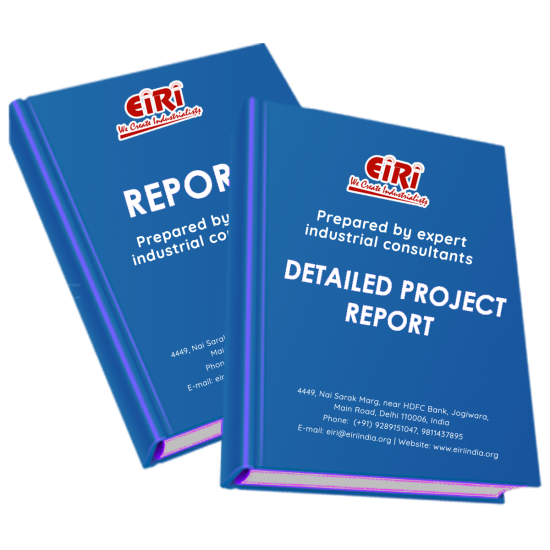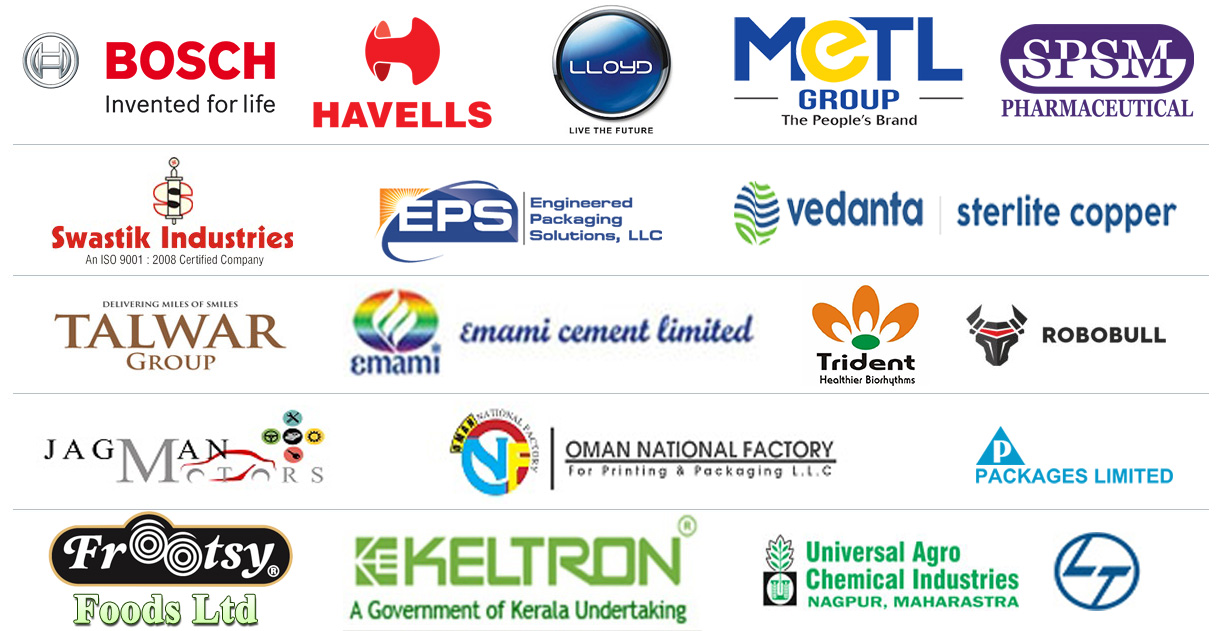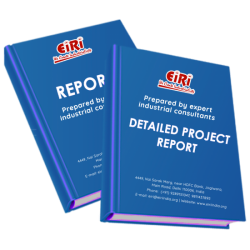COPPER & BRASS RECYLING PLANT

- More than 40 years of experience
- Managed by expert industrial consultants
- ISO 9001-2015 Certified
- Registered under MSME, UAM No: DL01E0012000
- 24/5 Research Support
Get your quesries resolved from an industry expert. Ask your queries before report or book purchase. - Custom Research Service
Speak to the our consultant to design an exclusive study to serve your research needs. - Quality Assurance
All reports are prepared by highly qualified consultants & verified by a panel of experts. - Information Security
Your personal & confidential information is safe & secure.
COPPER & BRASS RECYLING PLANT
EIRI/EDPR/4816 J.C. 3037
INTRODUCTION
RECYCLING OF COPPER
Scrap Value
For thousands of years, copper and copper alloys have been recycled. This has been a normal economic practice, even if regretted by some. One of the wonders of the old world, the Colossus of Rhodes, a statue spanning the entrance to Rhodes Harbour, was said to have been made of copper. No trace of it remains since it was recycled to make useful artefacts.
In the Middle Ages it was common that after a war the bronze cannons were melted down to make more useful items. In times of war even church bells were used to produce cannon.
The entire economy of the copper and copper alloy industry is dependent on the economic recycling of any surplus products. There is a wide range of copper based materials made for a large variety of applications. To use the most suitable and cheapest feedstock for making components gives the most economic cost price for the material.
Scrap Value - Copper
The usual commercial supplies of pure copper are used for the most critical of electrical applications such as the production of fine and superfine enamelled wires. It is essential that purity is reproducibly maintained in order to ensure high conductivity, consistent annealability and freedom from breaks during rod production and subsequent wire drawing. Since the applied enamel layers are thin but have to withstand voltage, they must have no surface flaws; consequently the basis copper wire must have an excellent surface quality. Primary copper of the best grade is used for producing the rod for this work. Uncontaminated recycled process scrap and other scrap that has been electrolytically refined back to grade 'A' quality may also be used.
The copper used for power cables is also drawn from high conductivity rod but to a thicker size than fine wires. The quality requirements are therefore slightly less stringent. The presence of any undesirable impurities can cause problems such as hot shortness which gives expensive failures during casting and hot rolling. For the same reason, scrap containing such impurities can only be used for this purpose if well diluted with good quality copper.
For non-electrical purposes, copper is also used to make large quantities of plumbing tube, roofing sheet and heat exchangers. High electrical conductivity is not mandatory and other quality requirements are not so onerous. Secondary copper can be used for the manufacture of these materials, though still within stipulated quality limits for impurities.
Where scrap copper is associated with other materials, for example after having been tinned or soldered, it will frequently be more economic to take advantage of such contamination than try to remove it by refining. Many specifications for gunmetals and bronzes require the presence of both tin and lead so this type of scrap is ideal feedstock. Normally it is remelted and cast to ingot of certified analysis before use in a foundry. Scrap of this type commands a lower price than uncontaminated copper.
Scrap Value - Brasses
The recycling of brass scrap is a basic essential of the economics of the industry. Brass for extrusion and hot stamping is normally made from a basic melt of scrap of similar composition adjusted by the addition of virgin copper or zinc as required to meet the specification before pouring. The use of brass scrap bought at a significantly lower price than the metal mixture price means that the cost of the fabricated brass is considerably less than it might otherwise be.
The presence in brass of some other elements such as lead is often required to improve machinability so such scrap is frequently acceptable. Besides the common free-machining brasses, there are many others made for special purposes with properties modified to give extra strength, hardness, corrosion resistance or other attributes, so strict segregation of scrap is essential.
Brass scrap arising from machining operations can be economically remelted but should be substantially free from excess lubricant, especially those including organic compounds that cause unacceptable fume during remelting.
When brass is remelted, there is usually some evolution of the more volatile zinc. This is made up in the melt to bring it back within specification. The zinc is evolved as oxide that is drawn off and trapped in a baghouse and recycled for the manufacture of other products.
Brass to be made in to sheet, strip or wire form must be significantly free of harmful impurities in order to retain ductility when cold. It can then be rolled, drawn, deep drawn, swaged, riveted, spun or otherwise cold formed. It is normal therefore to make it substantially from virgin copper and zinc, together with process scrap arising from processing that has been kept clean, carefully segregated and identified.
Scrap Value - Other Copper Alloys
Copper alloys such as phosphor bronzes, gunmetals, leaded bronzes and aluminium bronzes are normally made to closely controlled specifications in order to ensure fitness for demanding service. They are normally made from ingots of guaranteed composition together with process scrap of the same composition that has been kept carefully segregated. Where scrap has become mixed, or is of unknown composition, it is first remelted by an ingot maker and analysed so that the composition can be suitably adjusted to bring it within grade for an alloy.
COST ESTIMATION
Plant Capacity 24 Ton/Day
Land & Building (8000 sq.mt.) Rs. 1.88 Cr
Plant & Machinery Rs. 4.74 Cr
Working Capital for 2 Month Rs. 95.54 Cr
Total Capital Investment Rs. 102.46 Cr
Rate of Return 11%
Break Even Point 56%
CONTENTS
INTRODUCTION
RECYCLING OF COPPER
USES AND APPLICATION
INDUSTRY OVERVIEW
OVERVIEW OF METAL RECYCLING IN INDIA
COPPER RECYCLING INDUSTRY IN INDIA
B.I.S. SPECIFICATION
RAW MATERIALS FOR COPPER RECYCLING
COPPER RECYCLING RATE DEFINITIONS
DIFFERENT TYPES OF COPPER GRADES USED FOR RECYCLING
CHALLENGES AND FUTURE OF COPPER RECYCLING
RAW MATERIALS
PROCESS FLOW CHART
PLANT & MACHINERY DETAILS
INDUCTION FURNACE 250KW & 750KG CRUCIBLE
HIGH END SOLID WASTE SHREDDING AND RECYCLING MACHINERY
FINISHED PRODUCTEST /BY PRODUCTS
QUALITY CONTROL/QUALITY ASSURANCE TESTING
QUALITY CONTROL
METAL TESTING EQUIPMENT
COPPER RECYCLING BENEFITS
KEYINDUSTRYREGULATIONSANDPOLICIES
INDUSTRYSPECIFICREGULATIONS
LAWSRELATINGTOSPECIFICSTATEWHERETHEESTABLISHMENTISSITUATED
TAXRELATEDLEGISLATIONS
ENVIRONMENTLAWSANDREGULATIONS
IMPORT-EXPORTREGULATIONS
GENERALSTATUTORYLEGISLATIONS
DOCUMENTS REQUIRED FOR LICENSES
PRINCIPLES OF PLANT LAYOUT
PLANT LOCATION FACTORS
EXPLANATION OF TERMS USED IN THE PROJECT REPORT
UTILITIES
SUPPLIERS OF COPPER
AIR COMPRESSOR MANUFACTURERS
FIREFIGHTING EQUIPMENTS MANUFACTURERS & SUPPLIERS
WEIGHING BREIDGE MANUFACTURER
WEIGHING MACHINES
LABORATORTY EQUIPMENTS MANUFACTURERS
D.G. SET MANUFACTURERS & SUPPLIERS
ELECRICAL GOOD & SWITCH MANUFACTURE
DOCUMENTS REQUIRED FOR LICENSES
PLANT LATOUT
ADDRESSES OF RELEVANT GOVERNMENT OFFICES
ADDRESSES OF FINANCIAL INSTITUTIONS
GREEN ENERGY /SOLAR ENERGY
ORGANIZATION CHART
IMPLEMENTATION SCHEDULE
PROPOSED IMPLEMENTATION SCHEDULE 12 MONTHS
SWOTANALYSIS
COPPER RECYLING PLANT & MACHINERY SUPPLIER
RECYLING PROJECT CONSULTANT
APPENDIX – A:
01. PLANT ECONOMICS
02. LAND & BUILDING
03. PLANT AND MACHINERY
04. OTHER FIXED ASSESTS
05. FIXED CAPITAL
06. RAW MATERIAL
07. SALARY AND WAGES
08. UTILITIES AND OVERHEADS
09. TOTAL WORKING CAPITAL
10. TOTAL CAPITAL INVESTMENT
11. COST OF PRODUCTION
12. TURN OVER/ANNUM
13. BREAK EVEN POINT
14. RESOURCES FOR FINANCE
15. INSTALMENT PAYABLE IN 5 YEARS
16. DEPRECIATION CHART FOR 5 YEARS
17. PROFIT ANALYSIS FOR 5 YEARS
18. PROJECTED BALANCE SHEET FOR (5 YEARS)
How to Make Project Report?
Detailed Project Report (DPR) includes Present Market Position and Expected Future Demand, Technology, Manufacturing Process, Investment Opportunity, Plant Economics and Project Financials. comprehensive analysis from industry covering detailed reporting and evaluates the position of the industry by providing insights to the SWOT analysis of the industry.
Each report include Plant Capacity, requirement of Land & Building, Plant & Machinery, Flow Sheet Diagram, Raw Materials detail with suppliers list, Total Capital Investment along with detailed calculation on Rate of Return, Break-Even Analysis and Profitability Analysis. The report also provides a birds eye view of the global industry with details on projected market size and then progresses to evaluate the industry in detail.
We can prepare detailed project report on any industry as per your requirement.
We can also modify the project capacity and project cost as per your requirement. If you are planning to start a business, contact us today.
Detailed Project Report (DPR) gives you access to decisive data such as:
- Market growth drivers
- Factors limiting market growth
- Current market trends
- Market structure
- Key highlights
Overview of key market forces propelling and restraining market growth:
- Up-to-date analyses of market trends and technological improvements
- Pin-point analyses of market competition dynamics to offer you a competitive edge major competitors
- An array of graphics, BEP analysis of major industry segments
- Detailed analyses of industry trends
- A well-defined technological growth with an impact-analysis
- A clear understanding of the competitive landscape and key product segments
Need Customized Project Report?
- Ask for FREE project related details with our consultant/industry expert.
- Share your specific research requirements for customized project report.
- Request for due diligence and consumer centric studies.
- Still haven't found what you're looking for? Speak to our Custom Research Team
About Engineers India Research Institute:
Note: We can also prepare project report on any subject based on your requirement and country. If you need, we can modify the project capacity and project cost based on your requirement.
Our Clients

Our Approach
- Our research reports comprehensively cover Indian markets (can be modified as per your country), present investigation, standpoint and gauge for a time of five years*.
- The market conjectures are produced on the premise of optional research and are cross-accepted through associations with the business players
- We use dependable wellsprings of data and databases. What's more, data from such sources is handled by us and incorporated into the report
Why buy EIRI reports?
- Our project reports include detailed analysis that help to get industry Present Market Position and Expected Future Demand.
- Offer real analysis driving variables for the business and most recent business sector patterns in the business
- This report comprehends the present status of the business by clarifying a complete SWOT examination and investigation of the interest supply circumstance
- Report gives investigation and top to bottom money related correlation of real players/competitors
- The report gives gauges of key parameters which foresees the business execution






















